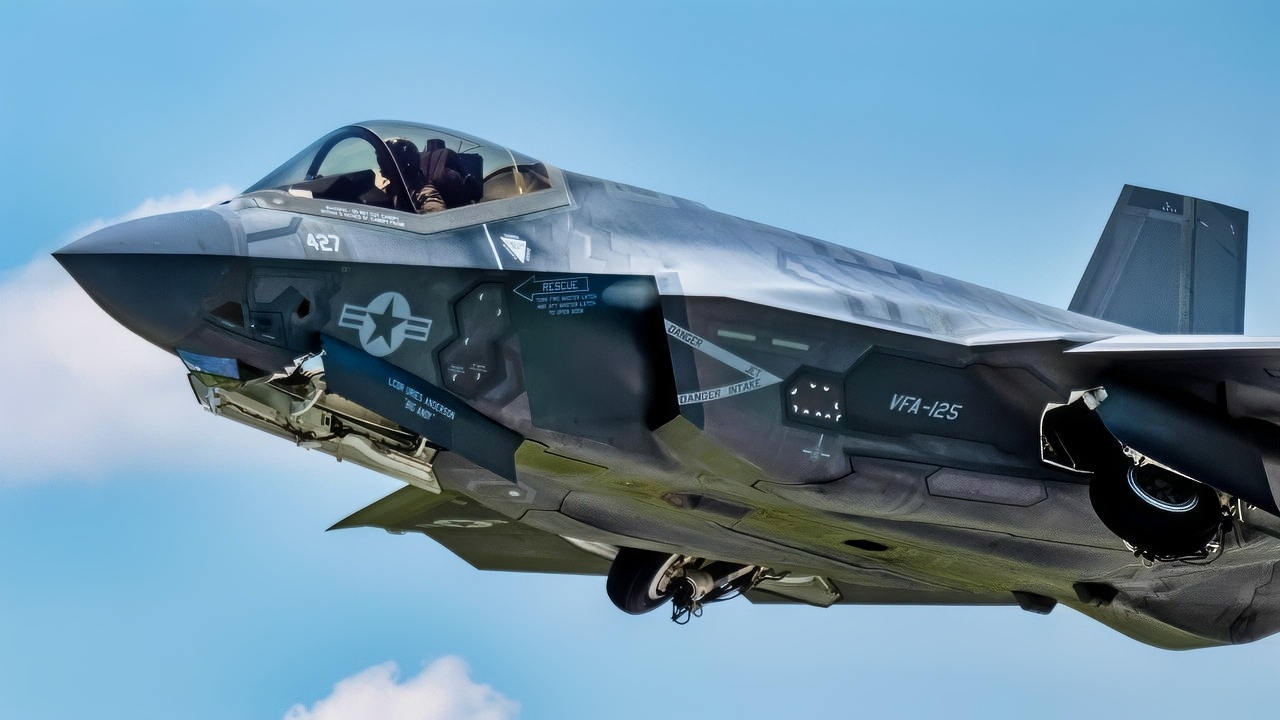Key Points and Summary – The F-35C is the Navy’s first stealth carrier fighter, purpose-built for deck ops with a 51-ft folding wingspan, reinforced gear, and coatings for harsh seas.
-Arresting-hook design, Delta Flight Path software, and carrier-optimized control surfaces cut workload and tighten landing dispersion.
-Sensor fusion and AI-enabled computing feed pilots a single, threat-aware picture while carrying 19,000 lb of fuel and up to 18,000 lb of weapons (5,000 lb internal in stealth).
-Loadouts span AIM-120/9X, 2,000-lb JDAMs, and StormBreaker for moving targets.
-With Mach 1.6 speed and 1,200-nm range, the F-35C has transformed U.S. carrier air wings.
The F-35C Is Ready for Anything
After first landing on a carrier more than 10 years ago, the now operational F-35C fleet has surged onto carriers in recent years, bringing a first-of-its-kind stealth fighter to the United States Navy’s Carrier Air Wing.
A “Naval Aviation Vision 2030-2035” document from 2021 explained that the F-35C aircraft was specifically engineered for landing on carriers.
Features unique to the variant include all-weather coatings and specially-configured landing gear to enable a safe landing.
The aircraft was designed with a broad wingspan and ruggedized components to withstand harsh maritime conditions, where rough seas, rain, wind, fog, and snow can complicate efforts to land. Its 51-foot wingspan makes it the largest of the three F-35 variants.
The aircraft’s structure needs to be able to withstand the impact of landing on a carrier.
Additionally, the F-35C features larger, foldable wings that facilitate slower approach speeds, making it compatible with moving ships.
The wings of the F-35C are built with what’s called “aileron control surfaces” designed to provide control power to roll the aircraft at slow approaching speeds.
On an aircraft carrier, the ship has arresting wires or metal cables attached to hydraulic engines, which slow the aircraft down to a complete stop within the landing area.
The cable is positioned four to six inches above the deck of the carrier, and hydraulic fluid controls the pace of deceleration for the aircraft.
An A hook lowers from the back end of the F-35C aircraft, designed to catch the cable and slow down the plane.
AI & Sensor Fusion for F-35C
Much like the F-35A and F-35B short-takeoff-and-landing aircraft, the F-35C relies on advanced sensors and AI-enabled computing to gather, organize, and present time-sensitive, critical information to pilots about altitude, speed, navigation, targeting, and threats.
The aircraft is equipped with a full suite of weapons, including 5,000-pound GPS-guided Joint Direct Attack Munitions (JDAMS), as well as air-to-air and laser-guided missiles. The F-35C can travel with 19,000 pounds of fuel and 18,000 pounds of weapons.
The aircraft can reach speeds up to Mach 1.6 and travel more than 1,200 nautical miles. In pure stealth mode using internal weapons bays, the F-35C can travel with 5000 pounds of weapons.
In 4 Words: Stealth And Powerful Weapons
The stealth fighter also carries two AIM-120 air-to-air (AMRAAM) and two 2,000-pound Joint Direct Attack Munitions, as well as the AIM-9X and the high-tech, all-weather StormBreaker precision glide bomb.

U.S. Navy Lt. Dave Hinkle, F-35C Lightning II Demonstration Pilot, performs during the 2021 Atlanta Air Show, Atlanta Regional Airport-Falcon Field, Ga., May 23, 2021. The U.S. Navy and Marine Corps’ carrier variant has larger wings and more robust landing gear than the other F-35 variants, making it suitable for catapult launches and fly-in arrestments aboard naval aircraft carriers. (U.S. Air Force photo by Staff Sergeant Thomas Barley)
In development for many years, the StormBreaker is a high-tech weapon capable of tracking and destroying moving targets from great distances using a tri-mode seeker with millimeter-wave, laser, and infrared guidance technology.
Another significant advantage of the F-35C is that it leverages a new generation of computing built into the aircraft, which enables a smoother, safer landing for pilots on the carrier deck.
The technology is a software called Delta Flight Path, an advanced series of algorithms that ease the workload placed upon pilots during their approach to a carrier when landing.
The software, therefore, naturally increases safety margins and reduces what’s called touchdown dispersion.
The software helps pilots navigate the many complexities associated with a carrier landing, as they must account for wind speed, atmospheric conditions, and the ship’s speed.
Pilots follow a yellow light on the flight deck of the ship, called the Fresnel Lens, to help maintain the trajectory of the approach, known as their glide slope.
About the Author: Kris Osborn
Kris Osborn is the President of Warrior Maven – Center for Military Modernization. Osborn previously served at the Pentagon as a highly qualified expert in the Office of the Assistant Secretary of the Army—Acquisition, Logistics & Technology. Osborn has also worked as an anchor and on-air military specialist at national TV networks. He has appeared as a guest military expert on Fox News, MSNBC, The Military Channel, and The History Channel. He also has a Masters Degree in Comparative Literature from Columbia University.
More Military
The F/A-18 Hornet Fighter Has a Message for the U.S. Navy
F-15E Strike Eagle Has Just 1 Mission
Russia’s Su-27 Flanker Fighter: Moscow’s Best Warplane Ever? You Decide
Iowa-Class Battleship USS Wisconsin Has a Message for the U.S. Navy
The U.S. Navy’s USS Connecticut Seawolf-Class Nuclear Attack Submarine Summed Up in 4 Words










